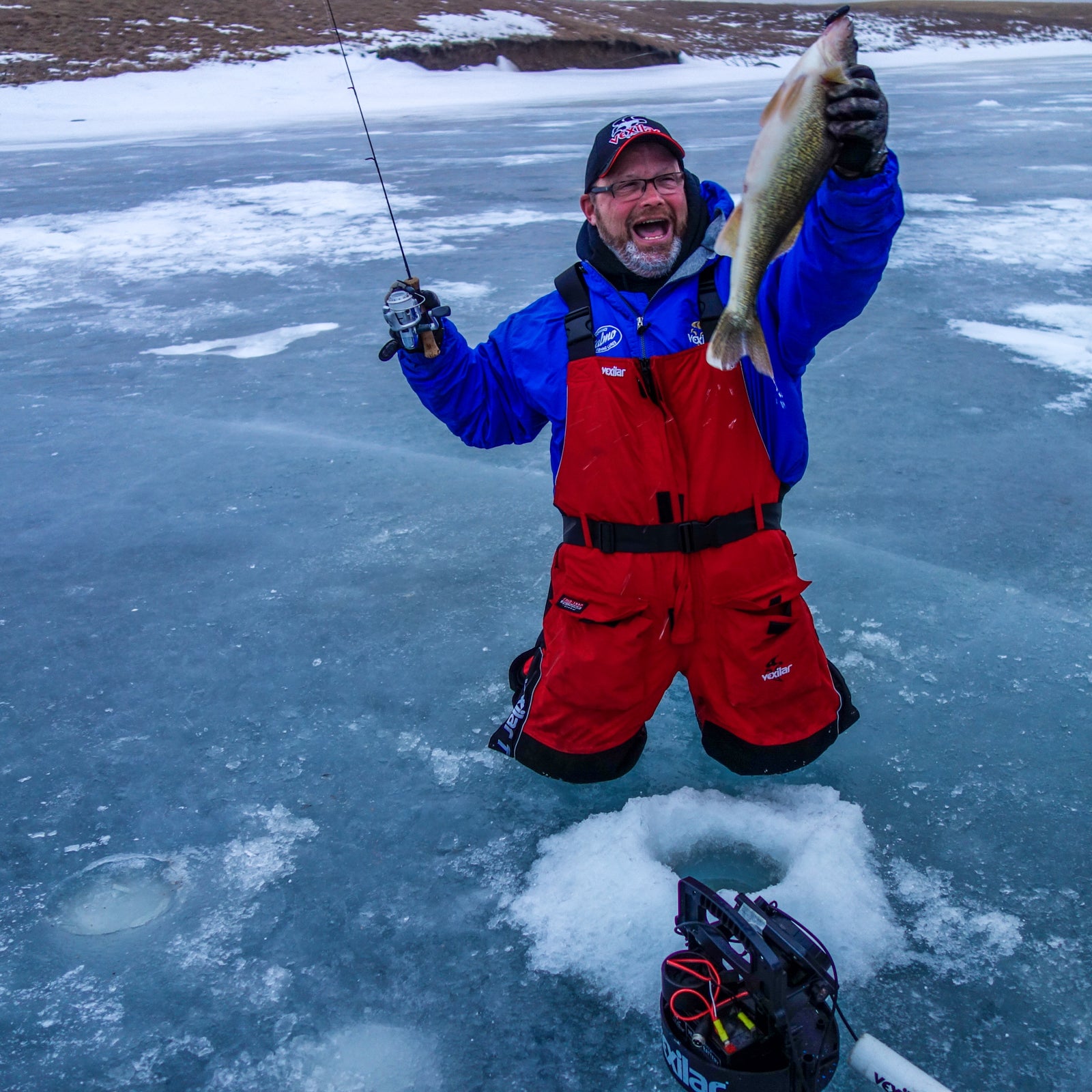If you’ve never been ice fishing, you probably imagine a few dudes sitting around in a shack, freezing their tuchuses off, drinking beers, and staring at a bobber float in a hole, right? Maybe that was true at one time, but thanks to tech innovations, the sport is now fast-paced and information rich. Heck, you might even get some exercise. Here we walk through the ins and outs of how to get started and try to convince you to give it a try.Â
Wait, I Don’t Just Drop a Bobber Down a Hole and Hope for the Best?Â
Nope. Nowadays, you use a sonar fish finder known as a to determine depth, watch your lure, see fish approaching, and jig them in. Vexilar is the electronics company that brought sonar tech to ice fishing, but like Jeep or Kleenex, it’s become so indelibly associated with the category that even rival products are colloquially known as “Vexilars.”Â
By timing how long sound takes to bounce off an obstacle and return, and both the manner of the bounce and direction it comes from, the Vexilar shows you the depth of the bottom, underneath your hole, and the location and relative proximity of fish. You use it to dangle your lure at the correct distance from the bottom for the fish you’re going after, and the time of day, and other factors, then watch to see if it brings any fish into your observable water column (actually a cone, it broadens to a little wider than your ice hole as it looks down). As fish approach, you can determine their size, and interest level, jigging the lure appropriately to lure them upwards, into a strike. You can even watch as the fish makes its final run and hits your lure, anticipating the moment where you need to jerk the rod upwards to set the hook.Â
Probably the best thing about a Vexilar is that it allows you to determine the presence, size, and interest level of fish almost immediately. If you drop your lure down a hole, and don’t see any movement on the Vexilar, it’s time to try a new location. If you do see fish, but they’re not interested in your lure, it’s time to try a different one. If those fish are nibbling on your lure, but not taking it, it’s time to try a smaller one. All this information transforms ice fishing from a game of luck, into a dynamic pursuit of fish, armed with the ability to find them, and determine what they want to bite.Â
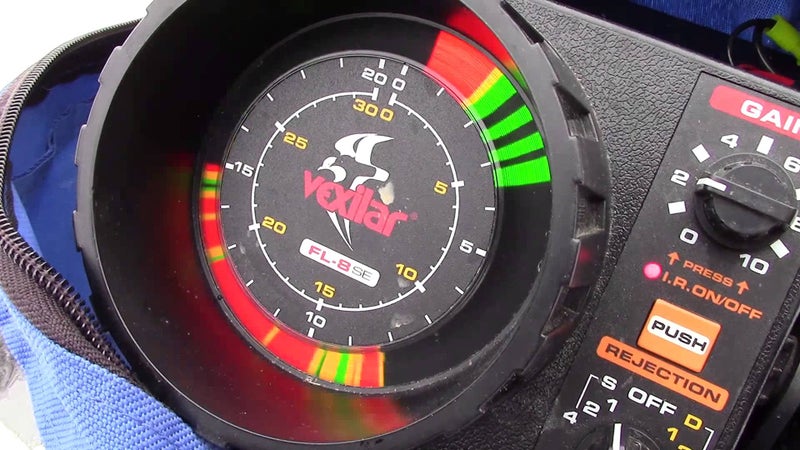
So I’ll Be Drilling Lots of Holes, Right?Â
During our three days on the ice in South Dakota earlier this month, we probably drilled 200 holes. That was made easy with use of . Where previous ice augers made you carry around a heavy, four-foot long, eight-inch wide steel bit, a heavy gasoline or propane-powered motor, plus an extra fuel tank, the K-Drill’s lightweight composite-bodied auger is powered by a standard hand drill and, altogether, both weigh just 10 pounds. A single drill battery will get you about 20 holes in two-foot-thick ice. The best part? It floats if you accidentally drop it in.Â
To determine where you want to drill, figure out in which depth water fish are biting, at what time of day. A local bait shop, fishermen, or witchcraft can help you figure this out. You can put your Vexilar down on ice (after sweeping it free of snow and debris), to find out the depth beneath (it won’t show you the fish until you drill), or make use of a topographic map of the lake. If you don’t find fish down a hole, keep moving. Factors you can explore by moving around are: vegetation, depth, underwater terrain contours, currents, etc.Â
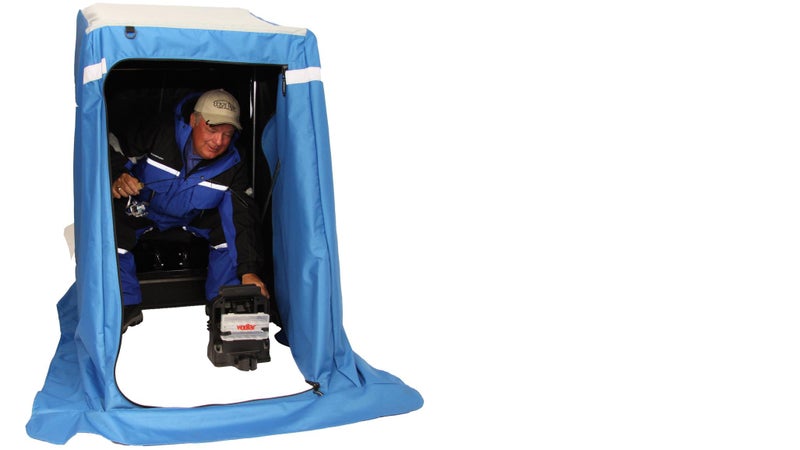
But that Warm Shack Sounded Awful Nice!
You still use them, but while you can tow the latest portable ice houses by truck or ATV, and they’re now ridiculously nice inside (some have flatscreen TVs, leather sofas, kitchens, bathrooms and more), they may not be able to keep up with the bite. So, were invented to give you a comfortable, insulated place to sit, while keeping the freedom of movement. Housed in a rugged plastic sled, they tow effortlessly across the ice via a waist strap, and pop up and down instantly. Just drill your hole, sit down on the seat, reach behind you, and pull the insulated hood up and over your head. There’s room inside to fish, eat a sandwich, and two-person models allow you to hang out with your buddy, too. Towing it around, they’re a convenient place to stash your Vexilar, rod, auger, and minnow bucket.Â
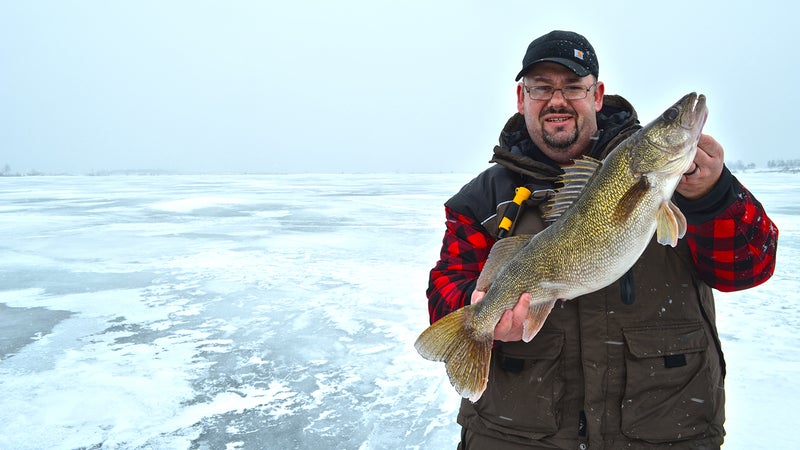
Where Should I Go?Â
Suitable lakes are spread across the northern U.S., and throughout Canada. Probably the best ice fishing is to be found in , where you can find walleye, pike, perch, and crappie across the regions 131 lakes. A three-day, non-resident fishing license is just $67, and the state clears snow off popular fishing lakes for you. Due to the popularity of pheasant hunting in the area, lodges abound. We stayed at , about an hour’s drive outside Aberdeen, where they’ll put you up, feed you, and give you access to their private lake for $225 per person.Â
Wherever you go, be cognizant of ice thickness. The rules of thumb are: Four inches or less, don’t go out on on it. Four to six inches, foot travel only. At six to twelve inches, ATVs and snowmobiles are safe. With 12 to 16 inches, a small car or pickup may be safe, but you’re advised to wait until 16 before vehicular ice travel becomes totally safe. We had ice about two feet thick, and people were confident driving $60,000 pickups towing $10,000 ice shacks out onto it. The creaks and booms of shifting ice never stopped creeping me out, but I tried to put on a brave face in front of my more experienced friends. If you’re just starting, I’d observe what the locals are doing. If they don’t take their truck out, don’t take yours, either.Â
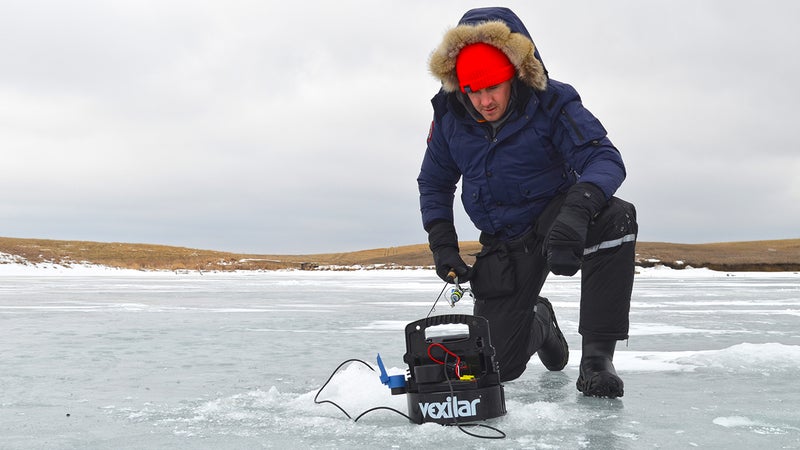
What Should I Wear?Â
applies, with the added conceit that you’ll be standing around, or walking, not participating in athletic endeavors. So add an additional mid-layer or wear a high-loft down parka like the I’m pictured in here.Â
You will want a couple specific pieces of ice fishing gear. A pair of tall, insulated rubber boots will keep the frigid water that pours out of fresh ice holes off your feet, and counter the cold ice you’ll be standing on all day. I wore the , as did most of the rest of the fishermen. You’ll also need a set of fishing bibs, which zip on over your regular pants, adding water and windproofness, insulation, and knee pads for extended kneeling. makes great, affordable stuff.Â
Your hands are trickier. You’ll need dexterity and grip for reeling the fish in, handling them, and attaching lures. But, you also need heavy insulation for times that you’re just standing around jigging. I wore a pair of over a set of thin, merino liner gloves from Icebreaker, but any heavily insulated glove or mitt would work, size up so they fit over the liners, and so they can be quickly thrown off when you have a fish on.Â
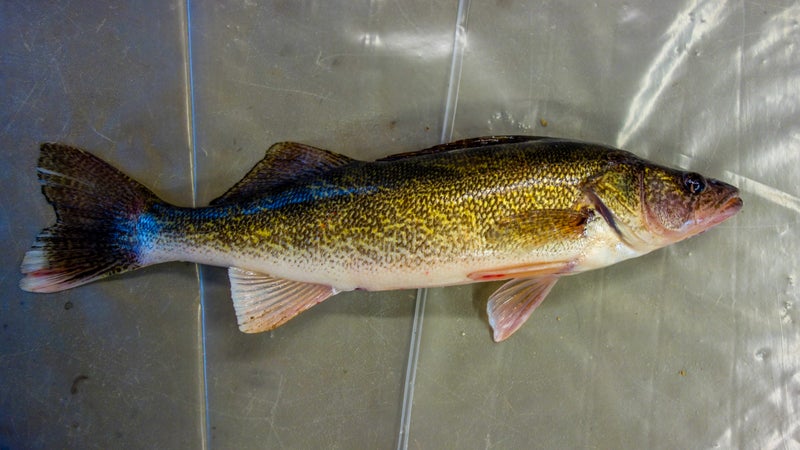
How Much Will This Cost Me?Â
One of the great things about ice fishing is how accessible it is. Without a boat, the entry price for equipment is very low. You’ll need a rod ($25) and reel ($20), unless you already have one. Lures, and line are cheap. You probably already have cold weather clothing. And the rest can either be shared across a group, or you can tag along with experienced fishers who already have it all. One thing you should go ahead and buy is the Vexilar. You really want your own, in your own hole, and they’ll sell you starting at $170.Â
After that, it’s just the cost of a license (very cheap in your home state), a six-pack, and some batter to fry your walleye in.


